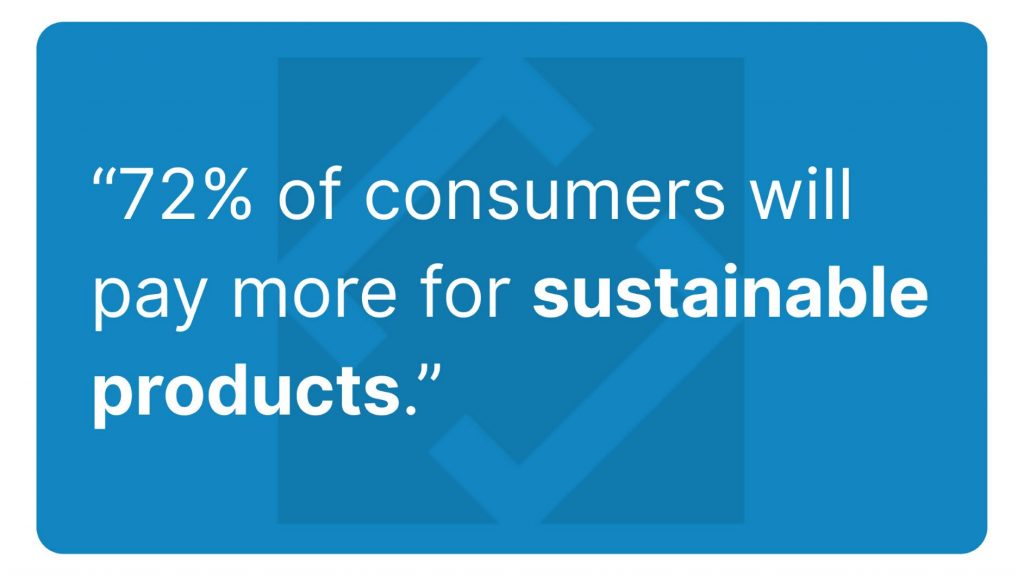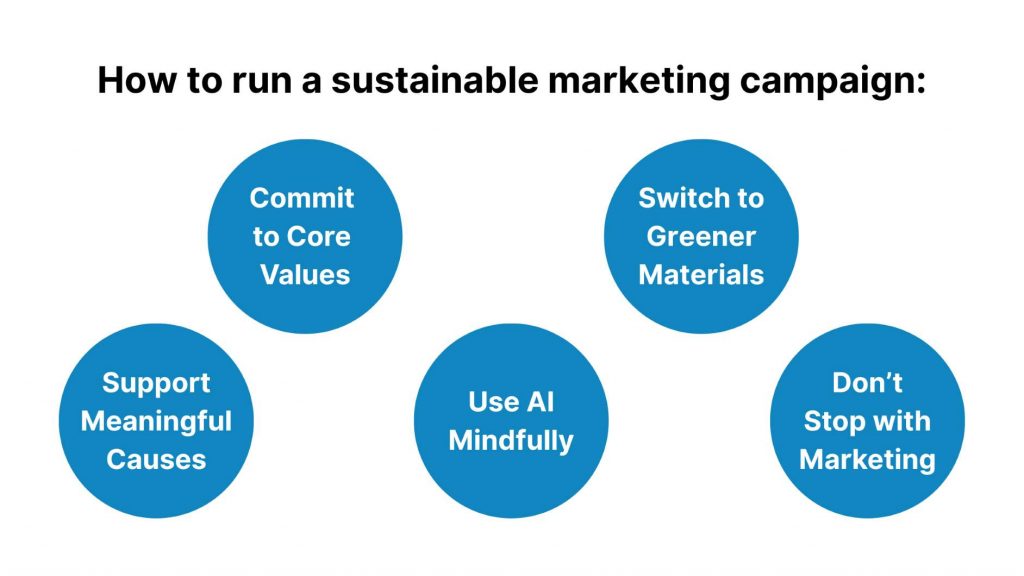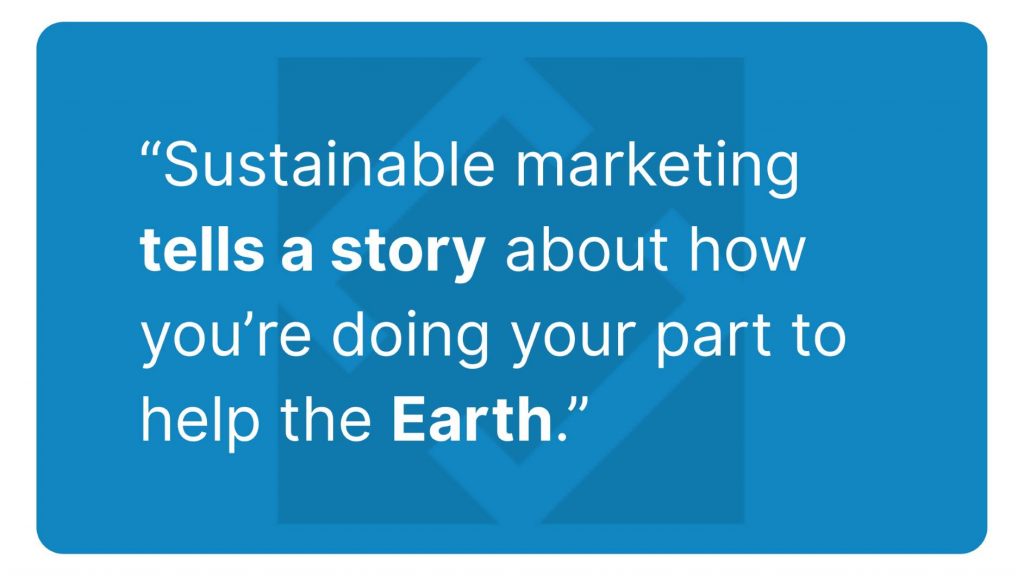- Sustainable marketing isn’t just about promoting eco-friendly products; it’s about running your campaigns in a way that reduces its environmental impact.
- Even digital tactics like email campaigns, web hosting, and AI tools leave a carbon footprint, so greener practices matter at every level of your marketing strategy.
- Start with clear sustainability goals that resonate with your audience, and share your progress through authentic storytelling on social platforms.
- Consider greener alternatives for packaging and print materials.
- Support causes like tree planting or plastic cleanup that reflect your values and give customers a reason to feel personally invested in your mission.
- True sustainability isn’t a one-off campaign. It’s a holistic mindset that influences product design, operations, and long-term brand positioning.
At Redefine Marketing Group, we love the desert. While it may appear harsh and unforgiving at first glance, the desert is actually teeming with life. Plants and animals in this ecosystem have adapted to thrive in a perfect balance of natural resources. Without this built-in sustainability, nothing could survive.
In marketing, just like the desert, sustainability is much more than a buzzword. It’s critical. According to a recent NielsonIQ survey, 72% of consumers are willing to pay more for sustainable products and purchase from eco-friendly brands. But the conversation around sustainability shouldn’t stop at products and services. If your brand is truly dedicated to helping the planet, you need to incorporate sustainable marketing tactics.
If you’re getting started with sustainable marketing, you may be worried that your actions will feel hollow or performative. So how can you demonstrate a commitment to going green beyond adding a little sticker to your product? In this article, we’re breaking down some of the emerging best practices in sustainable marketing. Here’s how you can incorporate them into your strategy.

Why sustainability matters
What is sustainable marketing? It’s a new paradigm that emphasizes greener, more eco-friendly practices. From using different packaging to carbon offsets for your digital footprint, sustainable marketing represents a commitment to lessening your business’ environmental impact. It’s about forward progress that shows consumers you’re doing your part to help the planet.
It may sound cliché, but there is no “Planet B.” In recent years, we’ve seen multiple examples of how pollution, greenhouse gasses, deforestation, and other issues have negatively impacted the environment. Additionally, these problems interrupt supply chains and create economic turmoil. That’s why it’s more important than ever to consider your business’ carbon footprint.
This includes digital marketing. While digital marketing might seem like it has a miniscule impact on sustainability, this isn’t always the case. Running web servers, sending marketing emails, using AI, and even an action as simple as opening your laptop all require energy and resources. Over time, this impact adds up.
Sustainable marketing is also important from a messaging perspective. Are your digital marketing campaigns pushing consumers to buy products that have a negative impact on the environment, like single-use plastic or fast-fashion? Or are you promoting more conscious consumption? If sustainability is important to your brand – or, if you’re an agency or freelancer, the brands you represent – your digital marketing needs to align with your values.
KPIs for sustainable marketing
By incorporating sustainability into your marketing strategies, you’ll attract like-minded consumers and build greater brand loyalty. This contributes to higher performance across several key marketing metrics:
- Customer Satisfaction Score (CSAT): A metric which rates your customer’s satisfaction with specific products or services.
- Net Promoter Score (NPS): How likely customers are to recommend your brand to their family and friends, generally measured on a scale of 0 to 10.
- Social Media Sentiment: A “soft KPI” that provides insight into your brand’s reputation on social media platforms, usually measured as positive, negative, or neutral.
How to run a sustainable marketing campaign
Not sure where to start? Don’t feel intimidated. Running a sustainable marketing campaign doesn’t mean you have to overhaul your entire strategy overnight. It means making intentional choices that align with your values, reduce unnecessary waste, and take into consideration the impact of your brand. Focus on progress, not perfection. Remember that when it comes to sustainability, small steps are better than taking no action at all.
Here are four steps to start running a sustainable marketing campaign:

1. Commit to core values
Begin by defining your core values. What does sustainability mean for your brand? Maybe it’s committing to zero waste within a 10 year deadline, or maybe it’s about more ethical sourcing for raw materials. Maybe you support environmental charities with a portion of profits. If you’re not sure how to identify eco-friendly goals, conduct market research and determine what’s most important to your customers.
Once you’ve established values around sustainability, use them to guide your decision-making and include these core values in your brand’s messaging. Social media is a great platform to introduce more sustainable marketing ideals. For example, if your team volunteers planting trees or cleaning up a local beach, you can use these events to generate video content for Instagram or TikTok marketing.
2. Switch to greener packaging & marketing materials
If your brand sells physical products, switching to more sustainable packaging is an easy first step. From product labels to shipping materials, see how you can source these supplies from recycled materials. You can also audit your product’s consumer journey; if you do a lot of ecommerce business with specific couriers, what is their carbon footprint? Consider switching to a new courier that has more electric vehicles in its fleet.
Beyond products, consider marketing materials such as:
- Catalogues
- Mailers
- Brochures
- In-store displays
Are these materials printed with sustainable, water-based ink? Do they use regular plastic, or plastic made from recyclables? Furthermore, consider the ROI of your marketing materials in contrast with their carbon footprint. Perhaps you send direct mailers with a low ROI, which could be repurposed as a digital email or SMS campaign.
3. Support meaningful causes
When you align your marketing with meaningful causes, it provides an opportunity to truly embody your commitment to sustainability. Additionally, it generates key talking points that you can incorporate into your marketing initiatives.
For example, many companies are committed to offsetting their carbon footprint by planting trees. You can partner with organizations that track your sales and plant a tree at certain milestones, such as one tree for every order over $10. When your orders are connected with a green initiative, customers also feel more connected to your cause because their direct actions help fuel sustainability.
4. Integrate your strategy across your entire business
Don’t stop with sustainable marketing. After all, sustainability is most effective when it’s embedded in your entire business model – not just your marketing strategy. Coordinate across teams, including product development, fulfillment, and customer service – so that your eco-friendly mission becomes a part of your brand’s DNA.
Once your sustainable strategy begins permeating other aspects of your business, you can call this out in case studies, white papers, and other marketing materials. This can help your brand become an authority in your space and generate linkable assets that others will share, which can dramatically boost your organic search strategy.
AI and the environment
No guide to sustainable marketing in 2025 is complete without a word about AI. Generative AI technology like ChatGPT has become a powerful tool for marketers and consumers alike. However, current AI models require significant energy resources – from vast amounts of power to the water used to cool their servers. Researchers estimate that one AI query uses five times more electricity than a standard Google search.
To be more sustainable, cut back on unnecessary AI usage whenever possible. Think of AI as a tool of last resort, rather than your daily go-to, and try to use precise prompts so you don’t need to “redo” your AI query multiple times. Create custom workflows so that gen AI tools understand your branding guidelines, which will reduce the resources it requires. Do edits, proofreading, and fine-tuning yourself, or with the help of a human teammate.

A win-win for everyone, including the planet
Running a sustainable marketing campaign means more than simply putting an “eco-friendly” sticker next to your brand’s logo. It’s about making consistent choices that resonate with your audience and reflect values that support a greener planet. From making changes to your physical products and shipping methods to aligning with purpose-driven partners, there are many ways you can add greater sustainability to your brand.
An effective sustainable marketing campaign tells a story about how you’re doing your part to help the environment – and it’s backed by action. Even if you’re taking small steps to reduce your carbon footprint, your audience will see this impact. Embracing sustainability can position your brand as a thoughtful authority in your space. And of course, it helps the planet! Including our beloved desert.
Want to get started with a more sustainable marketing strategy for your business? Contact the Redefine team today.





